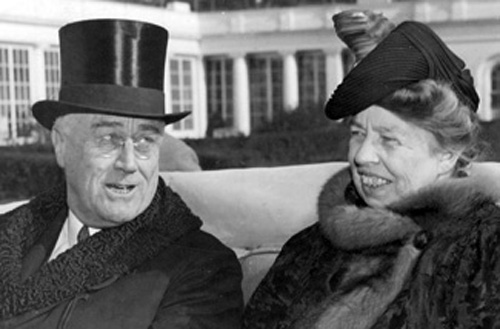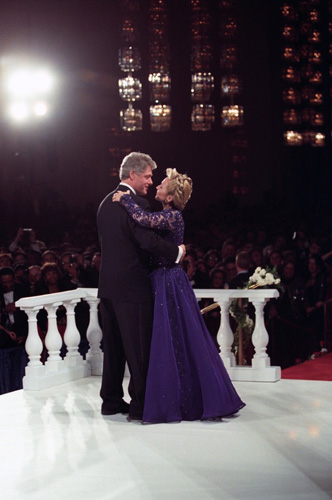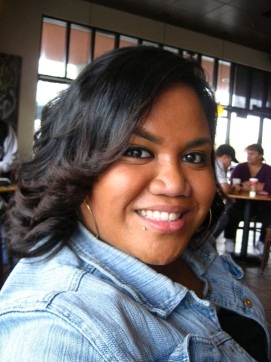Dr. McWaine and I are in Washington today to join hundreds of thousands of our fellow citizens and visitors from around the world to witness on the National Mall the grand transfer (or confirmation) of executive power that occurs when an American President-elect takes the oath of office. This is the second time we’ve attended an Inauguration. We were here four years ago when approximately 2 million people packed the Mall, the largest crowd ever to assemble in the capital city.

President Obama addresses almost 2 million fellow citizens on January 20, 2009. (We were standing hallway down the Mall, at the Washington Monument.)
Quadrennial culmination and public celebration of our democratic processes, there is nothing else quite like Inauguration Day on the American civic calendar. The legislative, executive, and judicial branches of the Government assemble at the Capitol in full view of the American People. Our President-elect and Vice President-elect swear to “preserve, protect, and defend the Constitution of the United States.” And our new President lays out his vision for the Nation.
It’s just after dawn here in DC on January 21st, and we’ll be leaving the hotel shortly to navigate the Metro system to the Mall. I’ll be tweeting and posting to Facebook and Instagram throughout the day, so please check my feeds for photos and updates. For now, I’ll share a few notes of historical and personal interest about Inauguration Day assembled by my colleague Phil:
* * *
Inauguration Day, by Phil McKenna
The Constitution says little about the process to inaugurate a President, only that the individual elected must take the oath specified in Article II, Section 1. So the Inauguration ceremony itself follows a path not set by law but well-worn by traditions — some of which date back to the very first inauguration of President George Washington in 1789, others of which have developed over the intervening years.

George Washington takes the oath of office on April 30, 1789 at the Federal Hall in New York City.
The 56 Inaugural Days since 1789 have seen many changes, from venue to format to dress code, but they have all had a common thread – they all take place very publicly, in front of the American people. The transfer is both literal and symbolic.
Since 1837, when Martin Van Buren and Andrew Jackson rode together in a carriage to the Capitol, the outgoing President has joined the President-elect for the swearing-in ceremonies. Their combined presence shows how the democratic process naturally institutionalizes peaceful and legitimate shifts in power, even when the two are vehement political adversaries.

President-elect Warren Harding and President Woodrow Wilson ride together in 1921, the first time a motor vehicle was used in the Procession to the Capitol.
The language a President uses during his inaugural address is also carefully chosen to reflect or enhance unity. An excellent example was Thomas Jefferson’s first address in 1801. After prevailing in a bitter political campaign against John Adams (who declined to attend Jefferson’s inauguration), he reminded his followers of the “sacred principle” that for the will of the majority to be rightful it “must be reasonable; that the minority possess their equal rights, which … to violate would be oppression.”
In the face of civil war in 1861, Abraham Lincoln appealled to “the better angels of our nature.” First elected in the throes of the Great Depression, Franklin Roosevelt proclaimed that that “the only thing we have to fear is fear itself.” In 1961, John F. Kennedy famously challenged Americans to “ask not what your country can do for you, ask what you can do for your country.”

President John F Kennedy delivers his iconic address on January 20, 1961.
The 20th Amendment to the Constitution, ratified in 1933, changed the legal commencement of a Presidential term from noon on March 4 to noon on January 20. This year, as has happened on the six previous occasions when Inaugural Day has fallen on a Sunday, President Obama and Vice President Biden were officially sworn in on Sunday at the White House and Naval Observatory, respectively. The oaths are then readministered in public on Monday.
I’ll describe briefly the traditional Inauguration Day events. First, though, I note that in 2009 and again this year, President Obama added a new element — a National Day of Service. The President asked Americans across the country to organize and participate in service projects in their communities on Saturday to celebrate the legacy of service of Dr. Martin Luther King, Jr. The President, First Lady, Vice President and his wife, and members of the Cabinet participated in service projects in the Washington area.

Franklin and Eleanor Roosevelt attend a pre-inauguration morning worship service in 1933.
Morning Worship Service. This follows a tradition dating back to March 4, 1933 when, prior to his swearing-in ceremony, President-elect Franklin D. Roosevelt and his wife Eleanor attended a church service at St. John’s Episcopal Church, next to the White House.
Procession to the Capitol. After the morning worship service, the President, Vice President and their spouses are escorted to the Capitol by members of the Joint Congressional Committee on Inaugural Ceremonies (JCCIC). Whenever there is a change of administration, the procession stops at the White house to pick up the outgoing President. As far as I’m aware, the only time in the past 200 years in which President-elect and outgoing President did not ride in procession together was when beleaguered President Andrew Johnson remained in the White House signing last-minute Reconstruction legislation, right up to the expiry of his term at noon.
Vice President’s Swearing-In. The Vice President traditionally takes the oath first. In the early years of the Republic, the Vice President, who acts as president of the Senate, was sworn-in by Senators in a separate ceremony inside the Senate on the final day of the congressional session. Given the throng of family members and friends of outgoing and incoming elected officials, the Senate doorkeeper occasionally had to push the clock hands back to fulfill Congress’s legal noon adjournment requirement.
President’s Swearing-In. The Presidential oath of office, per Article II, Section 1 of the Constitution, is: “I do solemnly swear (or affirm) that I will faithfully execute the office of President of the United States, and will to the best of my ability, preserve, protect and defend the Constitution of the United States.” The option to affirm was offered in case a person’s religious beliefs prohibited swearing. Only one president, Franklin Pierce in 1853, has chosen to affirm rather than swear his oath.

In 1985 President Ronald Reagan takes his public oath in the Rotunda of the Capitol due to the -14C (7F) temperature, the coldest Inauguration Day on record.
The Chief Justice of the Supreme Court traditionally administers the oath to the President. John Quincy Adams took his 1825 oath on a law book. All other Presidents have taken the oath on one or more Bibles. In 2009, President Obama used the same Bible used by President Abraham Lincoln. Today, President Obama will use two Bibles – that same Lincoln Bible and a Bible used by the Reverend Dr. Martin Luther King, Jr.
President’s Inaugural Address. After taking the oath of office, the President delivers an inaugural address. Fifty-four such addresses have been given by thirty-seven Presidents. Only four Presidents, all of whom were Vice Presidents who succeeded a President who died in office and then were not elected in the subsequent election — John Tyler, Millard Fillmore, Andrew Johnson, Chester Arthur — gave no inaugural address. George Washington’s second address was the shortest in history (only 135 words).
Other Elements of the Ceremony. Beginning with President-elect Kennedy’s selection of Robert Frost, a poet reads a poem written for the day. This year’s Inauguration Day poet will be Cuban-American Richard Blanco. There are invocation and benediction prayers. This year the invocation will be delivered by Mrs. Myrlie Evers-Williams, former chair of the NCAAP and widowm of civil rights martyr Medgar Evers. And there are musical selections, this year from the Brooklyn Tabernacle Choir, Beyoncé Knowles, Kelly Clarkson, and James Taylor.
Inaugural Luncheon. Beginning in 1953, the newly sworn President is escorted to Statuary Hall in the Capitol Building for an Inaugural luncheon hosted by the JCCIC, often featuring cuisine reflecting the home states of the President and Vice President. This year will be pan-American, with Steamed Lobster with New England Chowder, Hickory Grilled Bison with Wild Huckleberries, Red Potato Horseradish Cake, Hudson Valley Apple Pie, Sour Cream Ice Cream, Aged Cheese, and Honey.

President and Mrs. Carter walk the entire parade route in 1977.
Inaugural Parade. The tradition of an Inaugural parade dates back to the very first Inauguration, when George Washington took the oath of office on April 30, 1789, in New York City. As he traveled to the ceremony from his home in Virginia, local militias and groups of citizens joyfully joined him.
Since then, Presidents and Vice Presidents have traveled from the Capitol to the White after the ceremony, leading a procession of citizens’ groups, marching bands, ceremonial military regiments, and floats that reflect the diversity of the American People. President Jimmy Carter set a precedent in 1977 by walking the parade route from the Capitol to the White House with his wife Rosalynn. All subsequent Presidents have walked at least part of the route.

Bill and Hillary Clinton dance at one of the 14 Balls which marked four days of celebrations in 1997.
Inaugural Ball. The tradition of the Inaugural Ball, a grand party the evening of Inauguration Day, began with President James Madison in 1809.
Organizers of Dwight Eisenhower’s 1953 Inaugural Ball split the event into two simultaneous parties due to demand.
Since then the number of official Balls has expanded significantly. President Kennedy attended five in 1961. President Clinton attended 14 in 1997, an all-time high of fourteen.
This year there will be two official events – a very large Inaugural Ball (with affordable admission tickets available by lot) and a Commander-In-Chief’s Ball (for selected members of the U.S. military).
As has has become traditional, there will also be many unofficial Balls organized by various citizens groups.
The rich traditions and uplifting ceremonies of Inauguration Day make it a happy occasion, but history shows that there can also be risk for a President. On March 4, 1841, William Henry Harrison refused to move the ceremonies indoors despite frigid temperatures and a snow storm. He delivered the longest inaugural address in history (8,445 words, or about 2 hours long) without coat, scarf, or hat.
Shortly thereafter, President Harrison came down with pneumonia. On April 4, 1841, only 31 days later, he died after spending most of his short Presidency bed-ridden. The first American President to die in office, he still holds the record for serving the shortest term.
This year the weather forecast is for clear skies, temperatures well above freezing, and no risk of rain or snow, so it should be a great day.
- PM
* * *
In closing, I’d like to share that short inaugural address by George Washington that Phil mentioned. It’s one of my favorite because of what it reveals about the character and approach of our iconic founding President:
“Fellow Citizens:
“I am again called upon by the voice of my country to execute the functions of its Chief Magistrate. When the occasion proper for it shall arrive, I shall endeavor to express the high sense I entertain of this distinguished honor, and of the confidence which has been reposed in me by the people of united America.
“Previous to the execution of any official act of the President the Constitution requires an oath of office. This oath I am now about to take, and in your presence: That if it shall be found during my administration of the Government I have in any instance violated willingly or knowingly the injunctions thereof, I may (besides incurring constitutional punishment) be subject to the upbraidings of all who are now witnesses of the present solemn ceremony.”




![]()
 RSS
RSS














 View my Profile
View my Profile Connect with Wellington
Connect with Wellington Watch our Videos & Subscribe
Watch our Videos & Subscribe Watch our Videos on Vimeo
Watch our Videos on Vimeo Connect on GPlus
Connect on GPlus US Embassy NZ
US Embassy NZ


 Post Entries (RSS)
Post Entries (RSS)

